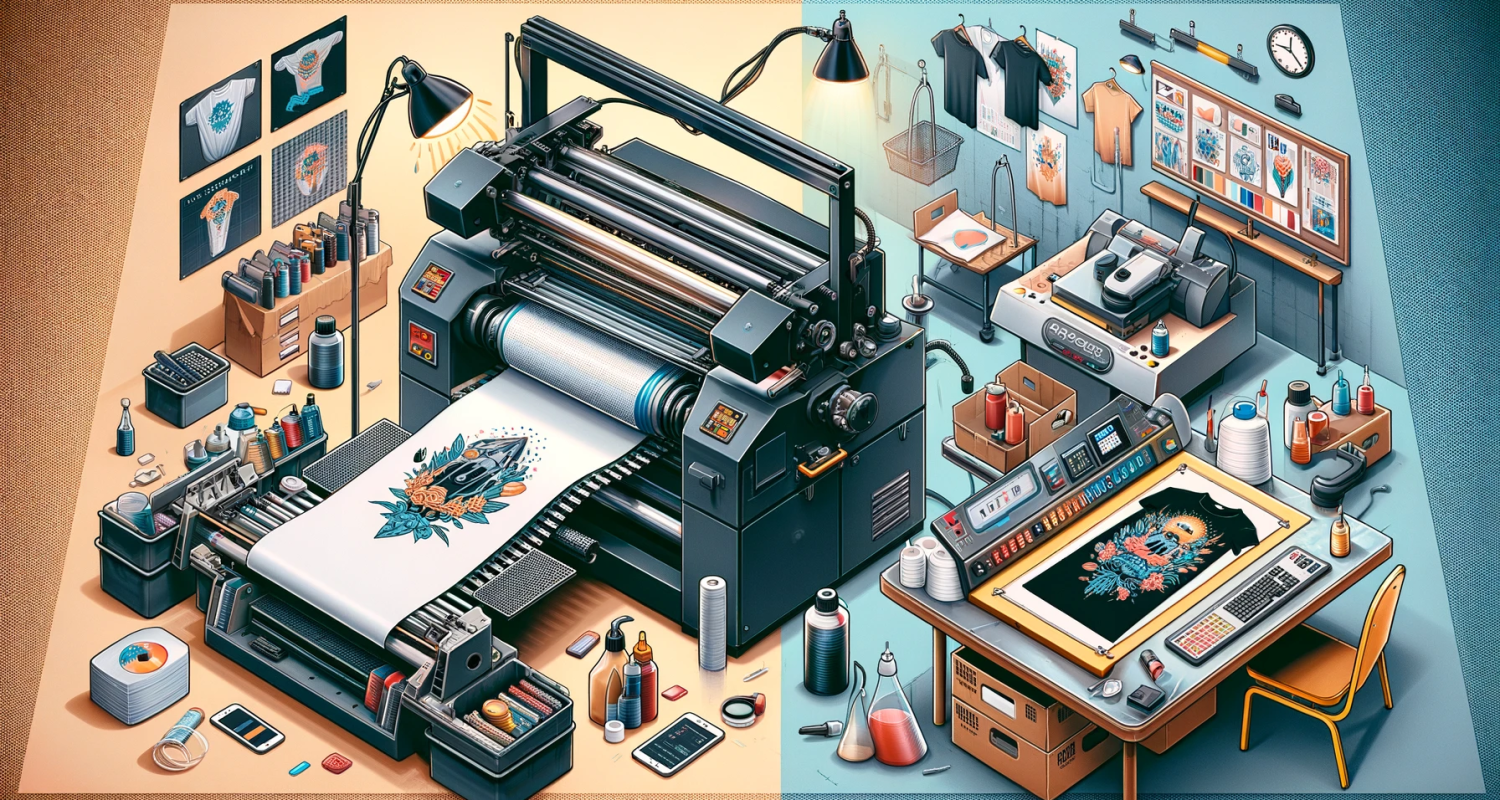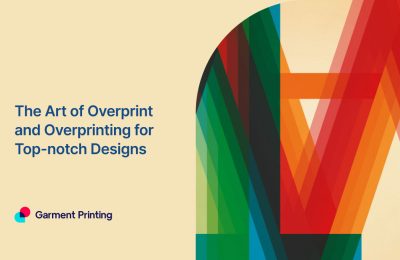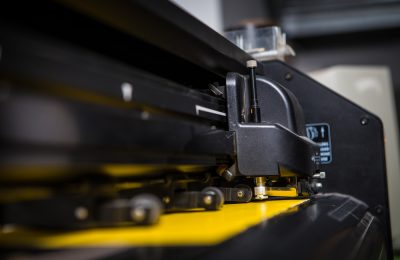|
Getting your Trinity Audio player ready...
|
Well! In the fast-evolving and dynamic circle of apparel design, there have emerged two printing techniques that seem to have taken over the others: Direct-to-film (DTF) printing and Vinyl printing.
Both have revolutionised the way the designs are being transferred onto fabrics, though they have different attributes.
Hmm! Let’s jump into a detailed comparison to understand which method better aligns with your design needs.
OK, wait! You need to try both ASAP, Click the Button Below & Order Now…..
Let us bring your personalised designs to life with our high-quality DTF & vinyl heat transfer printing.
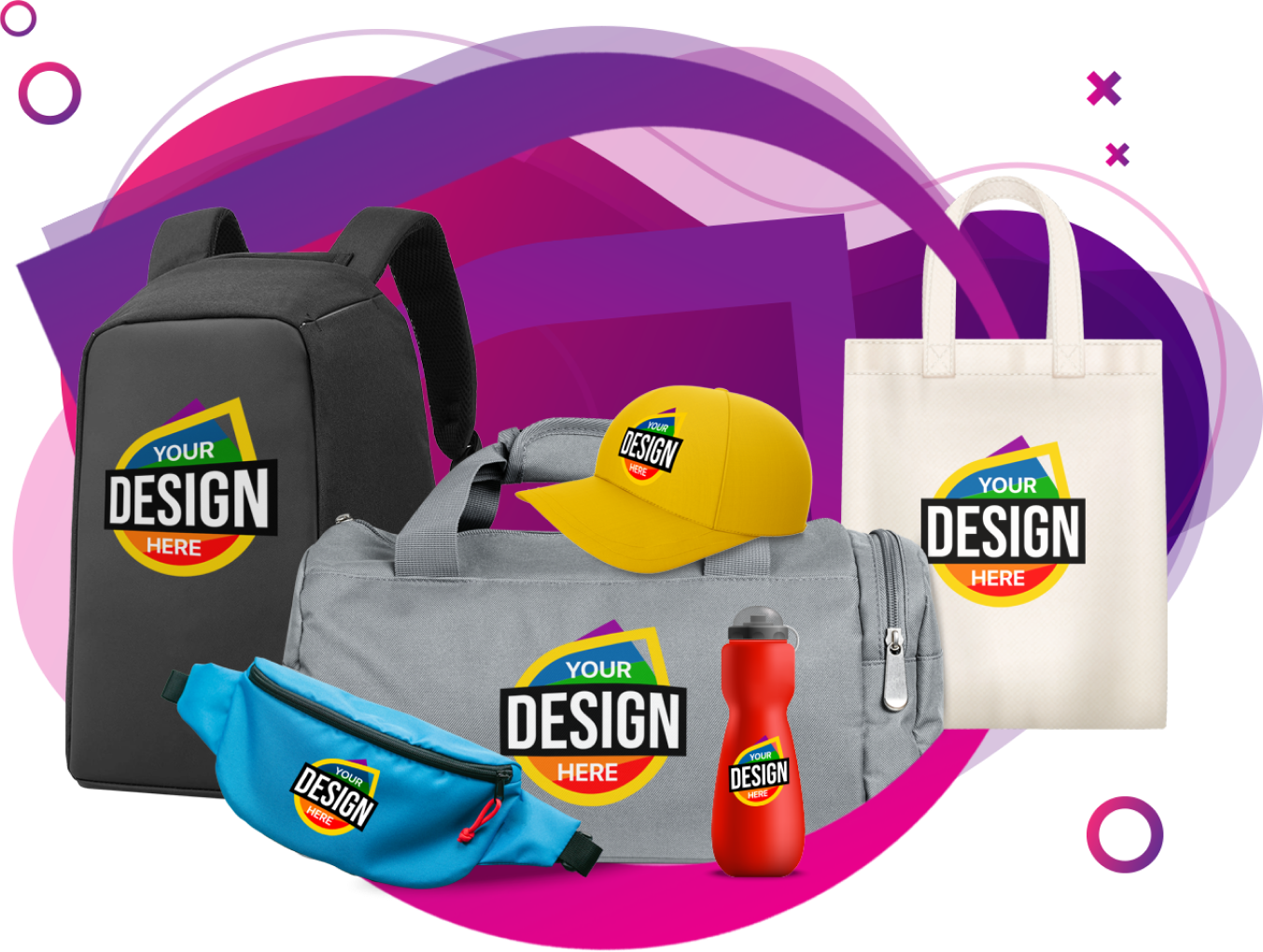
Everything About DTF Printing
Direct to Film (DTF) Printing is the process of digital printing where a design is directly transferred to the fabric through DTF printers and heat-transferring films.
In DTF printing, firstly, the eco-solvent or UV-curable inks are printed onto a heat-sensitive film as a design.
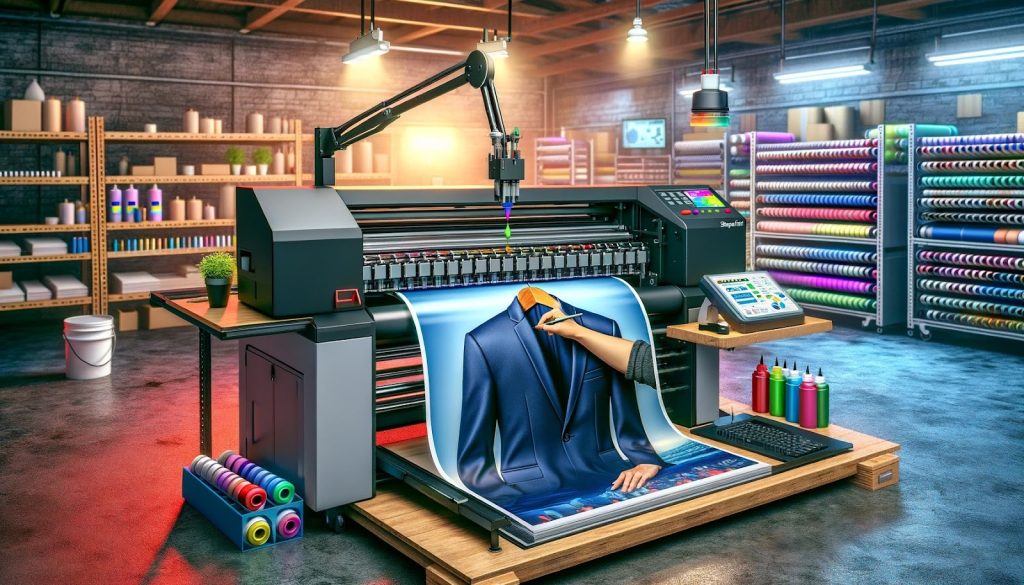
Later, this printed film is transferred onto the fabric by using a heat press machine.
Plus Points of DTF Printing
The DTF printing can be done on most fabrics, from cotton to polyester and also on blends. DTF printing process is vivid and sharp in detailed prints with excellent colour matching that can even replicate the most difficult features of a design and photorealistic pictures. These prints are soft on the fabric and can be worn comfortably without compromising the print quality.
DTF prints are durable, meaning they won’t crack or peel away. Their strength lets them even shape up correctly as if new after repeated washing. It allows one to use as many colours in the design with no added setup or cost. Therefore, it is very ideal for complex and multicoloured designs.
Minus Points of DTF Printing
DTF printing includes some special printers and heat press machines, which may be too expensive to purchase to other methods of printing and equally keep up. DTF printing is more likely to have a steep learning curve compared to traditional methods, such as serigraphy and would require a certain level of training and expertise to get optimum results.
Printing results in unwanted heat transfer films that would end up increasing production costs, negatively impacting the overall efficiency of DTF printing. DTF printing is overall a slow process and requires proper/regular maintenance with a ventilation system.
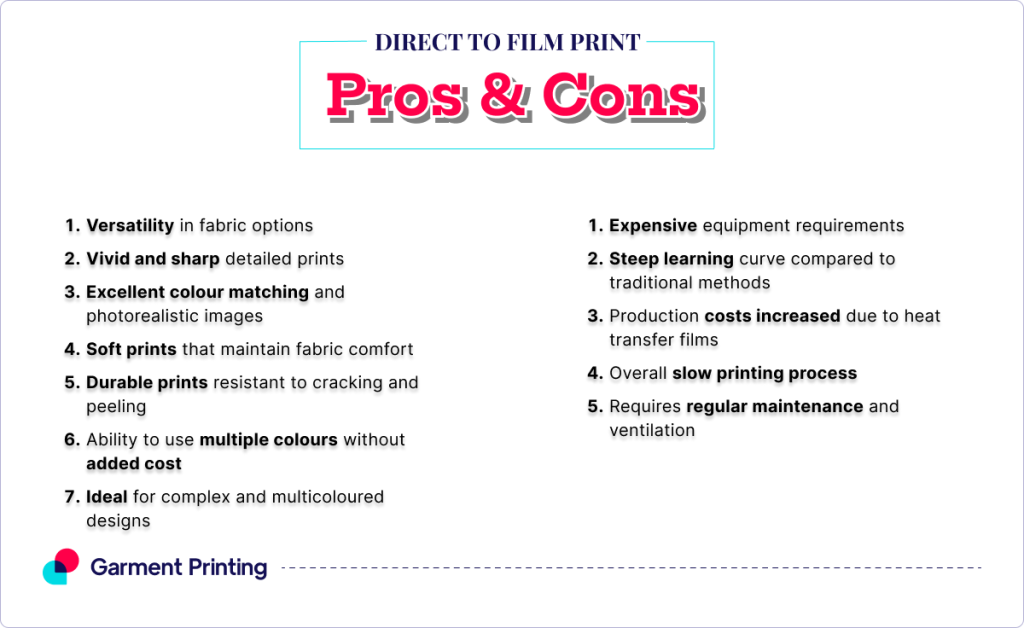
Read More about DTF Printing: Your Go-To Destination for Direct to Film Printing
Everything about Vinyl Heat Transfer
Heat transfer vinyl is also termed heat transfer paper. It is a process of fabric decoration that involves affixing pre-cut designs of vinyl onto various types of clothes and fabric using heat and pressure. This process, therefore, includes cutting out the required design from a vinyl material sheet, leaving out excess material and then transferring the design to the fabric using a heat press machine.
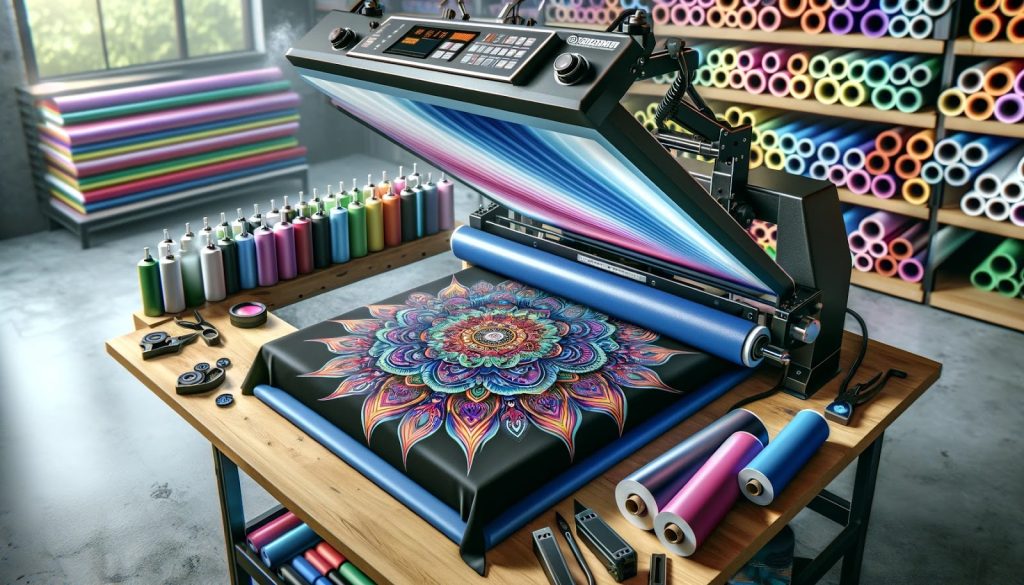
Plus Points of Vinyl Heat Transfer
The vinyl transfers assure one that they can last long without peeling, breaking, or even fading, even after several washes. Vivid and bold colours offered by the vinyl transfers make bright designs possible, perfect for designs that need high visibility and impact.
Vinyl transfers can be applied to a variety of materials, including cotton, polyester, blends, and even some types of leather, providing great flexibility in personalising garments. The vinyl cutting machines cut intricate designs, text, and a variety of forms to make beautiful and precise details.
The process of vinyl heat transfer is easy to learn and executes perfectly for a beginner or hobbyist looking to get the job done, with results that fool anyone into thinking the project was handled by a professional.
Minus Points of Vinyl Heat Transfer
The material is coated with a vinyl layer during transfer resulting in reduced permeability for clothing worn over long periods. The heat transfers leave a slightly raised texture on the fabric. This may not be desirable for some applications based on the vinyl selected. Vinyl heat transfer is perfect for simple designs but becomes quite limited when considering complex and multicoloured designs.
For large designs that require vinyl heat transfer, it is preferable to use this method. However, for small and medium-sized designs, there may be better options. Large designs may require many vinyl pieces and can be susceptible to wrinkling and misalignment during application. This can result in excess vinyl material, which may not be biodegradable and could contribute to pollution if not disposed of properly.
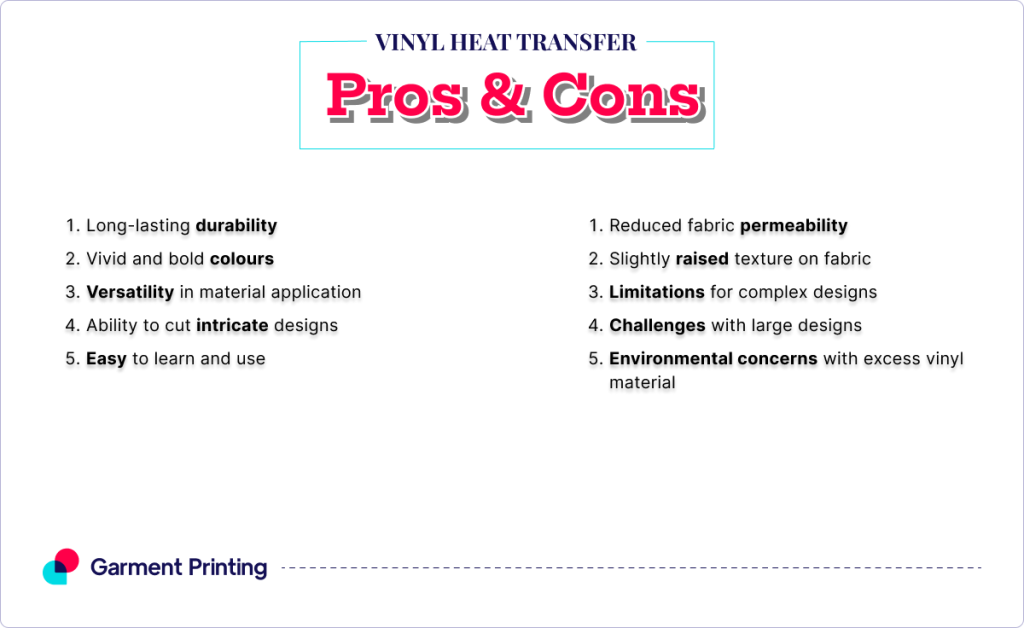
Read More about Vinyl & Heat Transfer Printing:
DTF Printing vs Vinyl Heat Transfer – Comprehensive Comparison
| Aspect | DTF Printing | Vinyl Printing |
| Design Aptitude | Excels with detailed, vibrant, full-color images. | Best for a solid colour, simple graphics and text offering crisp and precise results for straightforward designs. |
| Production Viability | Efficient for medium to large orders due to its streamlined process, allowing for faster production rates and reduced turnaround times. | More suitable for small, custom orders and prototypes, offering flexibility and customisation options for smaller-scale projects. |
| Textile Harmony | Adaptable to a wide variety of fabrics, including blends, synthetics, and even some specialty materials like leather and metallic surfaces. | Works well on cotton and polyester fabrics but may vary in compatibility with different types of vinyl and fabric blends. |
| Durability and Texture | Offers durable prints that withstand washing, fading, and cracking, with a softer texture on the fabric that maintains comfort and flexibility. | Provides long-lasting designs but with a noticeable texture and weight on the fabric, which may affect comfort and breathability. |
| Equipment and Initial Investment | It requires specific DTF printers, heat presses and associated materials, representing a higher initial investment than vinyl printing. | It is more accessible due to the lower cost of vinyl cutters and standard heat presses, making it a cost-effective option. |
| Customisation Options | It offers unlimited colour options and intricate design capabilities, making it suitable for complex and multicoloured designs without additional setup costs. | Limited to the colours and designs available in the vinyl material, with additional costs for each colour and design variation. |
| Environmentally Friendly | DTF printing typically uses water-based inks and produces less waste than vinyl cutting, making it a more sustainable option for printing. | Vinyl cutting generates waste in excess vinyl material and adhesive backing, which may not be biodegradable and can contribute to environmental pollution if not properly disposed of. |
| Application Versatility | It can be used on a wide range of products beyond apparel, including accessories, home decor items, promotional products, and more. | It is primarily used for garment decoration but can also be applied to signage, banners, decals, and other flat surfaces. |
| Learning Curve | Operating DTF printers effectively requires some training and expertise, particularly in setting up and calibrating the equipment for optimal results. | Relatively easy to learn and execute, making it accessible to beginners and hobbyists as well as professional designers and decorators. |
| Maintenance Requirements | DTF printers may require regular maintenance and calibration to ensure optimal print quality and performance, including cleaning printheads and replacing consumables. | Vinyl cutters and heat presses have minimal maintenance requirements, with occasional cleaning and calibration to ensure consistent results. |
Printings Ideal For – DTF Printing vs Vinyl Heat Transfer
| Ideal Apparel and Accessories for DTF Printing | Ideal Apparel and Accessories for Vinyl Printing |
| T-shirts DTF printing is ideal for customising t-shirts with vibrant designs on cotton and polyester blends. |
Sports Jerseys and Uniforms Vinyl printing is a popular choice for customising sports jerseys and uniforms as it is durable and can withstand frequent washing and wear. |
| Hoodies and Sweatshirts DTF printing can easily transfer intricate designs onto hoodies and sweatshirts, providing high-quality prints with excellent colour retention. |
Workwear and Uniforms Vinyl printing is suitable for adding logos, names, or other designs to workwear and uniforms for a professional and polished appearance. |
| Caps and Hats DTF printing is suitable for customising caps and hats (headwear) because it allows for detailed designs and colourful graphics. |
Personalised Gifts Vinyl printing is best for personalised gifts such as mugs, keychains, and phone cases. You can add custom designs and messages. |
| Bags and Totes DTF printing can personalise bags and totes with logos, artwork, or custom designs. |
Team Apparel Vinyl printing is popular for customising team apparel such as jerseys, t-shirts, and hoodies. It provides colourful prints and durable graphics. |
| Jackets and Outerwear DTF printing provides a versatile option for customising jackets and outerwear with intricate designs and bold graphics on different fabric types. |
Promotional Items Vinyl printing customises promotional items like water bottles, notebooks, and pens for branding opportunities. |
Wrap Up
DTF printing only excels in the execution of really complex and multi-coloured designs and it has excellent durability. It is best suited to medium and large orders and most kinds of fabric. On the downside, cost and practicality are where vinyl heat transfer mostly falls with smaller custom orders.
Thus, the simpler designs yield sharper results. However, based on the above aspects, that is, design complexity, production volume, fabric compatibility, and long-term durability of the two methods, the most preferable one should be followed.
Whether you’d rather get flexible with DTF printing or want the convenience of vinyl heat transfers, either one can fuel unlimited ideas for making your next piece of clothing or accessory personal and impactful.
FAQs
Do DTF transfers feel like vinyl?
DTF transfers usually possess a smoother feeling than vinyl transfers in clothing fabric. Even though they are very strong, DTF transfers enable the softness of the garment and offer it flexibility.
Is DTF more expensive than vinyl?
Even though the cost of DTF printing seems relatively lower in contrast to vinyl printing, the cost of the equipment, the materials, and the production volumes is said to influence the pricing.
In most cases, while it does have a higher starting cost in machinery, DTF printing is normally cheaper on mid-sized to large orders because of a streamlined process.
Is DTF better quality than sublimation?
DTF printing gives high results, whereas the sublimation process will give different kinds of results due to application and fabric fit. DTF best fits when using it for a detailed, multicoloured design of many fabrics, while in sublimation, it is best fit for polyester and gives vivid prints.
Can a DTF print be removed?
DTF prints are washable, friction-resistant, and light/crack-resistant removal from the fabric. However, there are certain possibilities of removal according to the base material of the fabric and adhesive type used in DTF transfer.
Can you use Cricut Press for DTF?
While Cricut presses are meant for cutting and applying heat transfer vinyl, users were experimenting with adapting them for DTF printing. On the other hand, a Cricut press would have to have adjustments made to it and extra equipment added if one were to derive the expected results with the machine.
How do I use DTF with Cricut?
To enable DTF printing, the Cricut machine will need to have the device modified in a way that will see it serve for DTF printing through setting adjustment, part upgrades, and even provision with other hardware additions like a DTF printer and heat press. Detailed instructions for using DTF with a Cricut machine may vary depending on the specific model and setup.
How long does vinyl printing last?
The lifespan of vinyl printing is influenced by several factors, such as the quality of the materials used, the application process, and the care and maintenance of the printed item. With proper care, the vinyl prints on this piece can last for many years. It is recommended to wash the garment with mild detergent, avoid using harsh chemicals or exposing it to high heat, and store it properly. By following these guidelines, you can ensure the longevity of the vinyl prints on your garment.
Which is better: vinyl print or sublimation?
The choice normally depends on the material to which vinyl printing or sublimation is being applied, whether the design is highly detailed, or the level of durability required. For simple designs, vinyl printing clear and sharp results would be practical to apply to every fabric.
On the other hand, sublimation can achieve bright, durable prints onto polyester media through a transfer process with heat and pressure, and therefore, it applies to specific applications such as sportswear and promotional items.
Does DTF require weeding?
Vinyl printing, on the other hand, usually involves weeding. The act of removing the surplus material from the design. DTF printing does not normally have something like a wedding. In this case, the design is printed directly onto the heat-sensitive film, and later on, with the help of the heat press machine, the printing gets transferred smoothly onto the fabric, making this a very smooth and efficient way of printing.
Which Epson is best for DTF?
In connection with the printers, some models of Epson printers will be suitable for DTF printing concerning such criteria as printing quality, print speed, and budget. Models like Epson SureColor F2100 and Epson SureColor F3070 have perfect colour details that are put out with high reliability and are very effective for DTF applications.
Does DTF last longer than sublimation?
The life of the prints by DTF printing and sublimation is strong and long, but the prints’ life might vary due to the type of fabric, times the washing is done, and outside environmental conditions. In general, correctly applied DTF prints and sublimation transfers can go through several washes without a change in color and quality of the images; thus, it is really good to hold the wash-fastness for different applications.
Suggested Reads:
- Screen Print vs DTF – What to Opt?
- A Basic Guide to Vinyl T-Shirt Printing!
- Digital Printing vs Embroidery: Which Is the Right for Workwear?
- Puff Printing 101: A Brief Introduction!
Images Source : ChatGPT
-

Meet Lisa John, a dynamic Content Manager and Marketing Professional at Garment Printing Group. With three years of industry experience, Lisa excels in crafting compelling narratives that not only illuminate the vibrant world of garment printing but also drive engagement and growth.
View all posts


